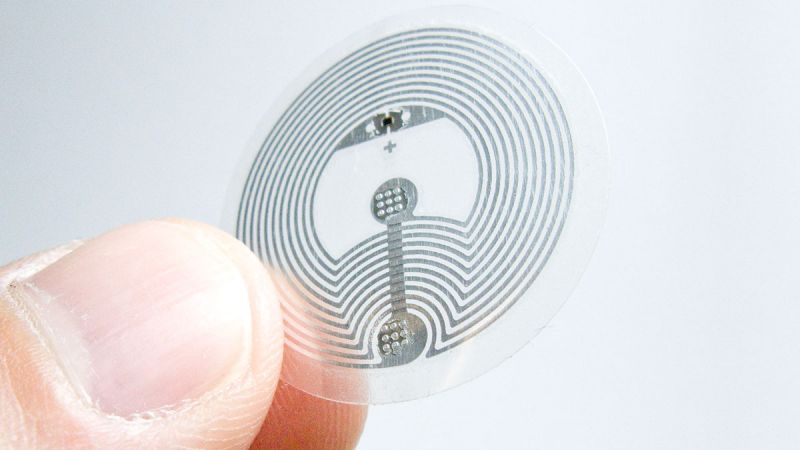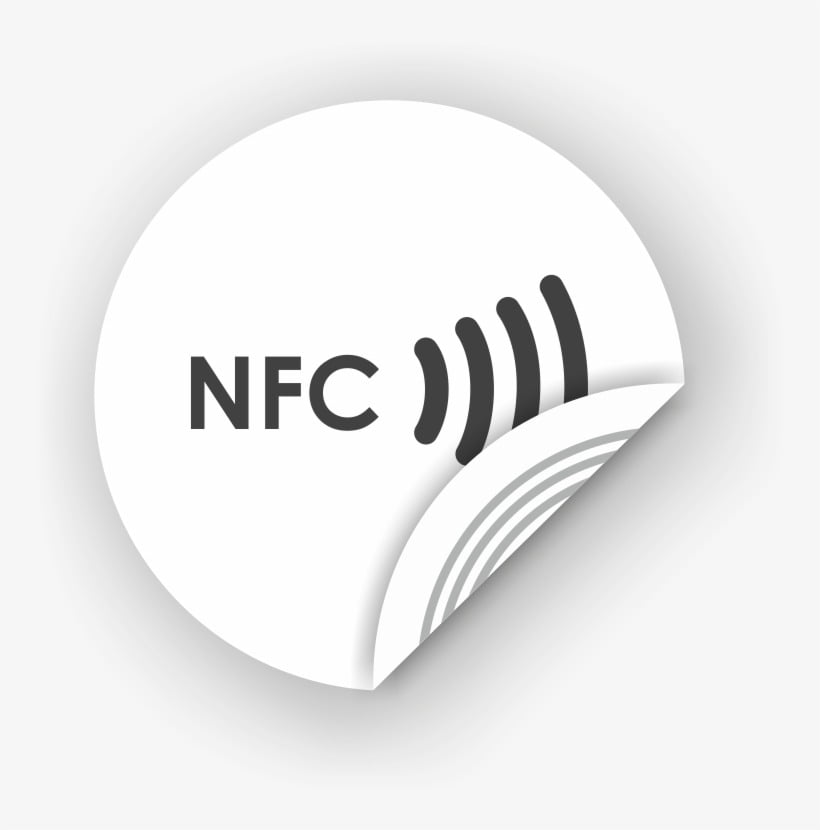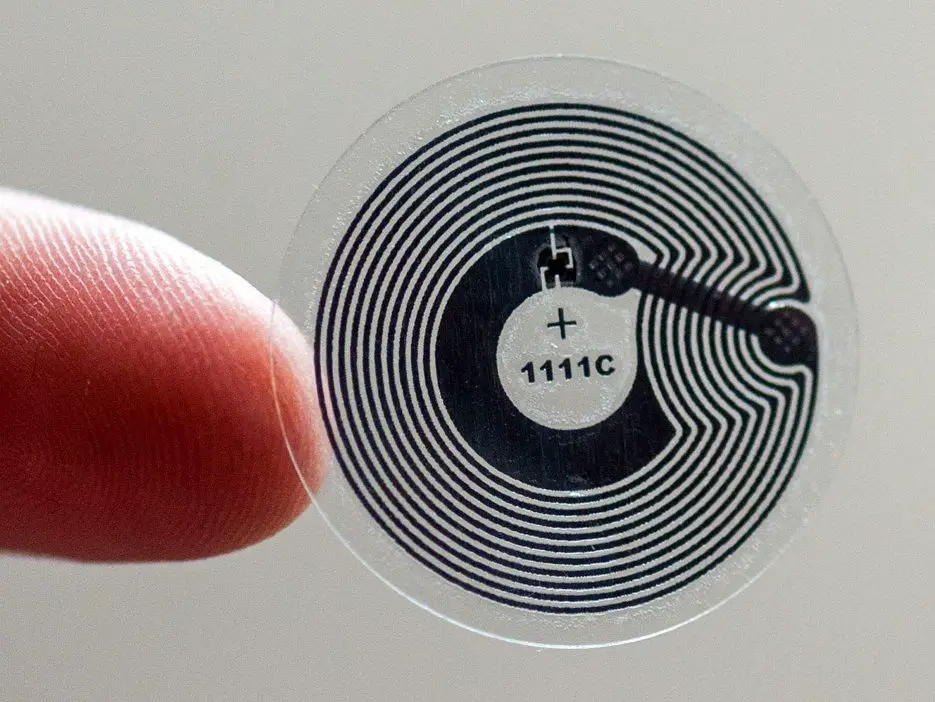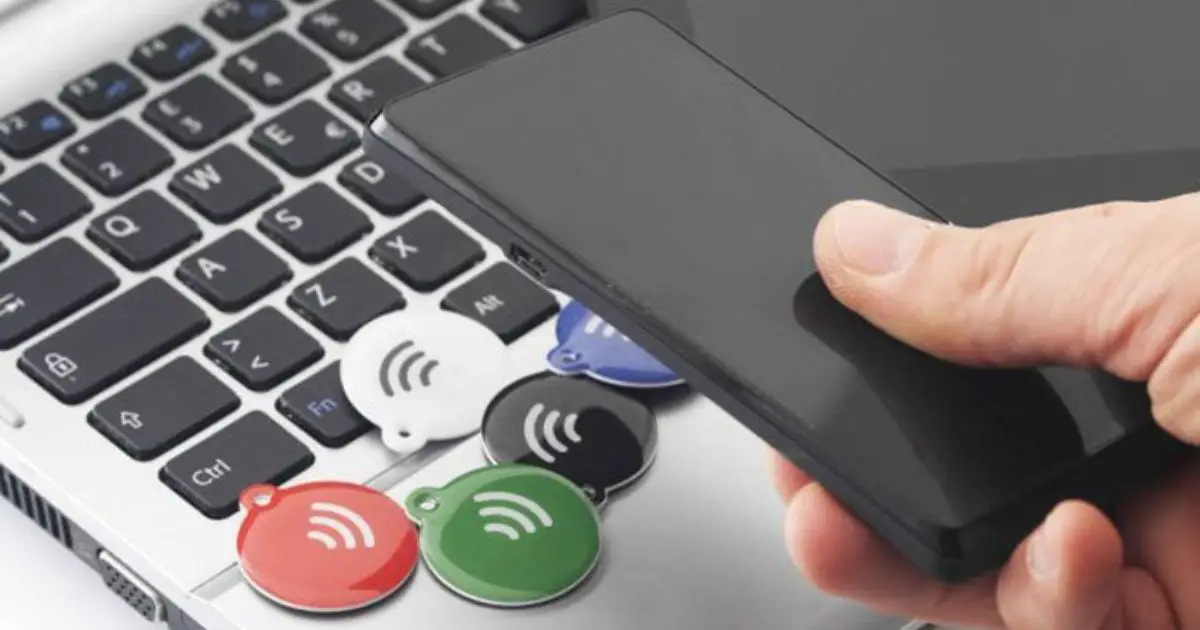Today we are going to tell you what are NFC Tags and how to use them. Major manufacturers such as Samsung and Apple have released their own models.
What are NFC tags?
NFC tags are devices that can be configured to perform certain functions automatically when read with a smartphone. These tags have an NFC chip inside, it can program certain tasks, such as activating the do not disturb mode on your phone or direct you to a website. By the way, it is worth mentioning that these small devices are powered by the smartphone that reads them.
The NFC chips present in the tags can be differentiated by their types, NTAG being the most common of them. The most important feature is the memory capacity they have. The data that can be stored in them depending on this specification, which is measured in bytes. The size is also important, because the larger they are, the greater the distance at which they can be read.

Normally, NFC tags have an adhesive backing so that you can stick them on a surface.
In short, they are extremely useful devices that allow you to save time by automating activities. Of course, when you buy a new one, it’s up to you to configure it, something we are going to learn how to do right now.
How to configure an NFC tag?
Okay, so you’ve bought an NFC tag to automate tasks with your smartphone, but how can you set it up?
Fortunately, you don’t have to have advanced knowledge to do this, as there are free Android apps designed specifically for configuring NFC tags. The best one is NFC Tools, as it allows you to write text, links to web pages, email addresses, phone numbers, addresses of an exact location, a Wi-Fi connection configuration, and even a GPS location on those tags.
To do this, the first thing you need to do is download the NFC Tools app on your smartphone, which, of course, must have an NFC chip. Follow these steps:
- Open NFC Tools.
- Click on the “Write” tab.
- Tap on “Add a record” to start choosing the action you will automate.
- Select whether you will add to the tag text, URL, a link to a specific search, a social network profile, a link to a video, file, or app, an email address, a contact, a phone number…
- Now, click on the option “Write / X bytes” to write that action on the NFC tag. This same option informs you about the size of the action you are going to write in the tag, very useful to know if it has enough space or not.
- Bring the phone close to the NFC tag to finish the process.

When you have finished the configuration, you only have to put the NFC tag in the place where you are going to use it and bring your smartphone close to it to be able to perform that specific task.
Best NFC Tag features
- Before bed: You can stick the NFC tag on your bedside table and you can activate Do Not Disturb Mode automatically. This way, you’ll rest knowing that no one will interrupt your sweet dreams.
- Direct access to your social networks: You can set the NFC tag to lead to your profiles on platforms such as Instagram, Facebook or Twitter.
- At work: You can place it on your desk at work so when you arrive, it can activate the Wi-Fi, and open the apps you normally use, such as Word or Google Drive.
- To share your contact: Instead of the typical contact cards, you can share your personal data by adding all that information to an NFC tag. So when you want to pass your contact information to other people in a business meeting, they only have to read it with their smartphone.
- Quick connection to a Wi-Fi network: Avoid having to always give the Wi-Fi password to your guests by giving them a direct connection by simply reading the NFC tag you have in the room.
- To send a pre-configured SMS: As we have seen in NFC Tools, you can save a pre-configured SMS and send it whenever you want.
- Listen to your favorite music: You can put one of these tags in the bathroom to access your favorite playlist when you go to take a shower.
- As a timer: Another option is to stick one of these NFC tags in the kitchen and set a timer.
To transfer files: You can insert a series of files in the tag to share them later with other people. - For cultural projects: NFC tags can be present in museums to enhance the visitor experience. For example, the Museum of London placed them next to some works of art so users could learn more information about them.
- Direct access to navigation: You can add a specific location on an NFC tag.
- In the car: Your car can be a very interesting place to place an NFC tag, for example, you can program the activation of Bluetooth to connect your smartphone to the car system, play your favorite music playlist and open apps such as Android Auto.
- Store private data: An NFC tag can hold contact data, phone numbers, links to websites and even text messages. Therefore, it can be an interesting place to store private data that you will need in the future.

- Direct access to your business website: If you want to spread the presence of your business on the network, you can put an NFC tag in your establishments that lead people directly to your website so customers can learn more information about it.
- Access to a restaurant menu: Like QR codes, NFC tags can quickly take you to a restaurant menu without the need for a paper menu.
- Pre-configured call: Just as you can configure an SMS to be sent directly when you bring your phone close to the NFC tag, you can program a call to a specific phone number.
- Identification at an event: NFC tags are also identification tools, so you can use them to identify yourself at events such as concerts, for example.
- Connect to a Bluetooth device: With NFC Tools you can also program the automatic connection to a Bluetooth device, e.g. a wireless speaker, by simply linking the smartphone and the tag.
- Activate airplane mode for studying: you can also place an NFC tag on your desktop to activate your smartphone’s airplane mode so you can concentrate while studying.





